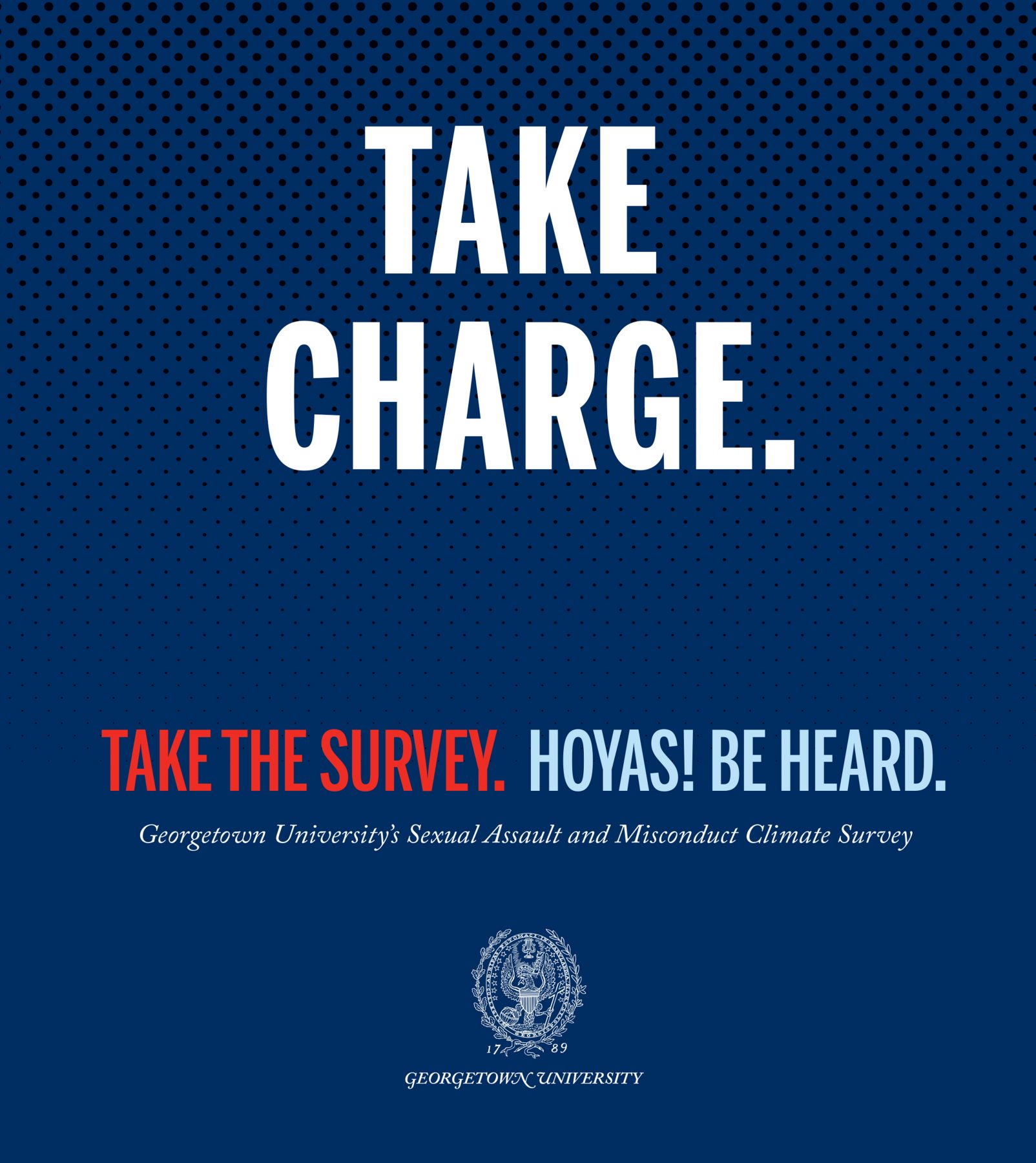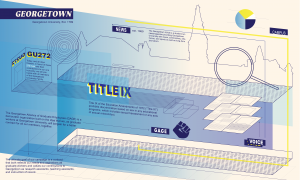Georgetown released its second campus Sexual Assault and Misconduct Climate Survey on Feb. 1. The survey, which runs through March 1, allows students to inform the university of their experiences with sexual assault and harassment during their time at Georgetown. This survey, created by the American Association of Universities (AAU), is being offered to students at 33 colleges nationwide. Georgetown’s goal is to measure the impact of the preventative resources and programs put in place after the first survey in 2016.
This editorial board urges students to take the climate survey. The information gathered from it will help the university decide how to further address sexual assault and harassment on campus. These results will be used to assess the value of previously instituted programs and impact the allocation of future resources. We can’t expect the university to effectively address our concerns unless we do our part in providing them with the information they need to promote a safe and respectful environment on campus.
The more students who complete this survey, the more we can hold the university accountable for its shortcomings. For example, Georgetown has not had a full-time Title IX coordinator since the previous one stepped down in June 2018, a concern which student activists have lobbied for since last year. The survey is an opportunity for the whole campus community to show that we take sexual assault and misconduct seriously.
A common misconception is that only students who have experienced sexual assault or harassment should take the survey. But it is essential that all students participate, regardless of their experiences. This way, the university can determine the scope of the issue and obtain accurate numbers that will help identify problem areas. Only with the largest participation possible can we learn the most about the climate of sexual assault and harassment on campus.
Students have a responsibility to take this survey and to take it seriously. But it’s also important that we don’t cause ourselves unnecessary harm or stress by participating. Remember that you can pause, save your progress, and return to the survey at any time. You can also skip questions that you do not feel comfortable answering.
The 2016 survey had a response rate of 62 percent among undergraduates and 51 percent overall (including graduate students), far outpacing the average response rate of 19 percent at other colleges and universities.
Of the 2016 survey respondents, 31 percent reported experiencing non-consensual sexual contact due to physical force or incapacitation, eight percentage points higher than the 2015 AAU survey average. However, only 24.5 percent of respondents said they knew where to find on-campus sexual assault or misconduct resources. This shows the importance of measuring the university’s progress over the past three years to learn how effective sexual assault prevention tactics and programs have been and to inform students of which resources have been most successful.
After the 2016 survey, a task force offered recommendations on how to move forward, and the university developed the Sexual Assault and Misconduct Advisory Committee (SAMAC) to implement those suggestions. As such, mandatory bystander training was implemented for the first time during the 2017-2018 school year for all freshman and transfer students. Additionally, SAMAC also provided training to GUPD officers, provided language to be used on class syllabi, and hired a new Health Education Services staffer.
This survey isn’t perfect. It is mostly identical to the one offered in 2016, intended to provide a reliable basis of comparison to prior results as well as other universities. The lack of customization may impede the university’s ability to hone in on the effects of particular campus initiatives. That being said, all information is valuable information, so students should still provide as much feedback as they can.
Because of concerns about whether the university’s sexual assault response system supports them, marginalized communities on campus may be less likely to take the survey, said Jenn Wiggins, assistant director for sexual assault response and prevention services in the Office of Health Education Services, in an interview with the Voice.
Those concerns are well-founded, but we encourage marginalized students, students of color, students with disabilities, LGBTQ students, and international students to participate in the survey. It is a powerful opportunity for the voices of all students to be heard and for the Georgetown community to hold the university accountable for addressing the concerns of students in every part of campus. Georgetown still has a long way to go in combating sexual assault and harassment, but continuing this survey is a good step and an effective way for students to provide feedback on one of the most pressing issues on college campuses to date.
Disclosure: Georgetown has paid for advertisement in the Voice promoting the climate survey. This article is not an advertisement, nor is it affiliated with the advertisements that the Voice has run in print and online.
Confidential Resources:
Health Education Services (HES)
sarp@georgetown.edu
Counseling and Psychiatric Services (CAPS)
(202) 687-6985
Title IX Online Reporting Form
georgetown.protocall.info/incident-report





